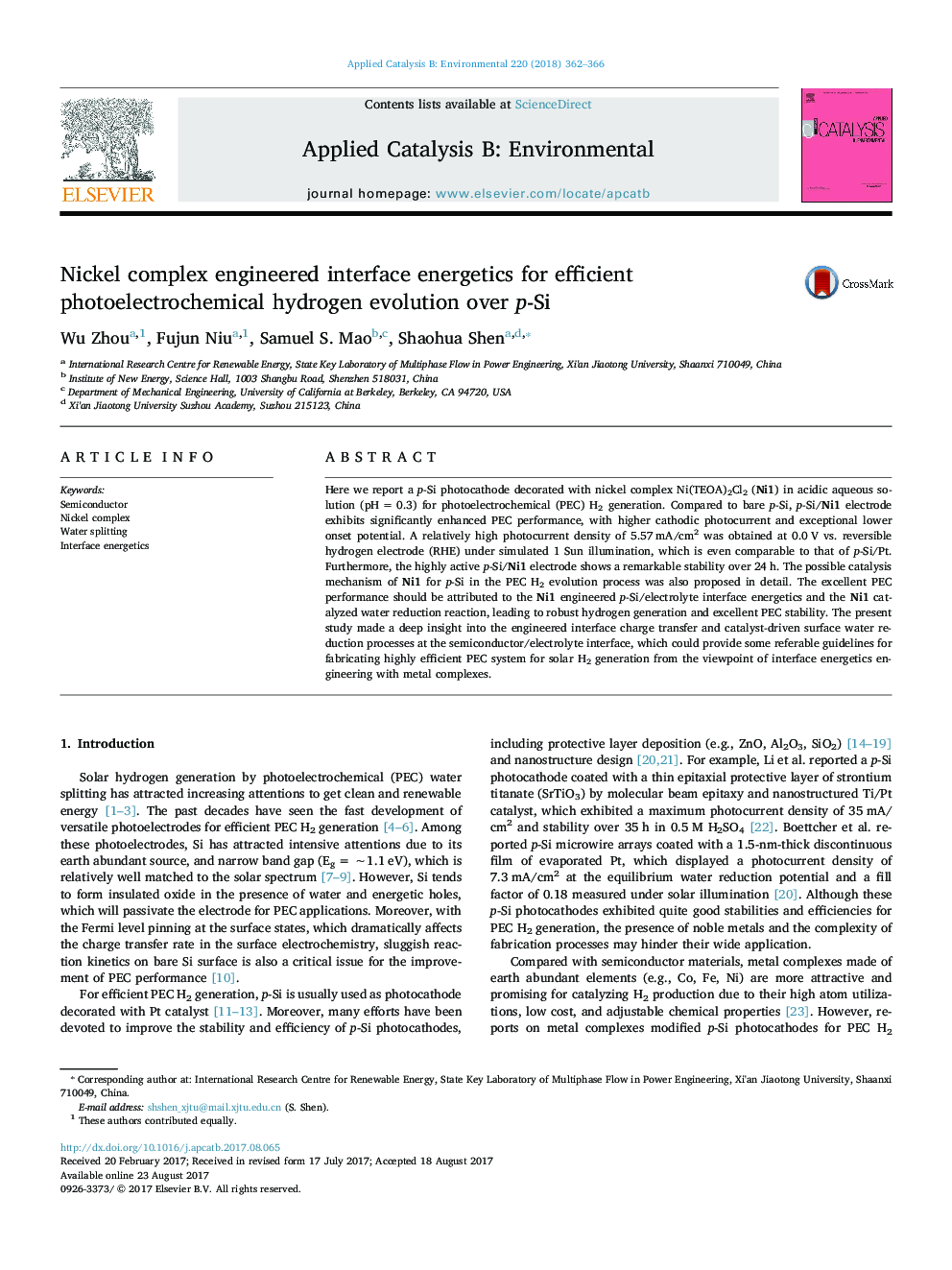| Article ID | Journal | Published Year | Pages | File Type |
|---|---|---|---|---|
| 6453617 | Applied Catalysis B: Environmental | 2018 | 5 Pages |
â¢A facile strategy was presented to develop photoelectrochemical hydrogen evolution system.â¢The p-Si/Ni1 system stands among the most efficent and stable p-Si/metal complexes systems.â¢P-Si/electrolyte interface energetics was engineered for efficient interface charge transfer.â¢The Ni1 complex driven surface water reduction process was revealed.
Here we report a p-Si photocathode decorated with nickel complex Ni(TEOA)2Cl2 (Ni1) in acidic aqueous solution (pHÂ =Â 0.3) for photoelectrochemical (PEC) H2 generation. Compared to bare p-Si, p-Si/Ni1 electrode exhibits significantly enhanced PEC performance, with higher cathodic photocurrent and exceptional lower onset potential. A relatively high photocurrent density of 5.57Â mA/cm2 was obtained at 0.0Â V vs. reversible hydrogen electrode (RHE) under simulated 1 Sun illumination, which is even comparable to that of p-Si/Pt. Furthermore, the highly active p-Si/Ni1 electrode shows a remarkable stability over 24Â h. The possible catalysis mechanism of Ni1 for p-Si in the PEC H2 evolution process was also proposed in detail. The excellent PEC performance should be attributed to the Ni1 engineered p-Si/electrolyte interface energetics and the Ni1 catalyzed water reduction reaction, leading to robust hydrogen generation and excellent PEC stability. The present study made a deep insight into the engineered interface charge transfer and catalyst-driven surface water reduction processes at the semiconductor/electrolyte interface, which could provide some referable guidelines for fabricating highly efficient PEC system for solar H2 generation from the viewpoint of interface energetics engineering with metal complexes.
Graphical abstractDownload high-res image (188KB)Download full-size image
